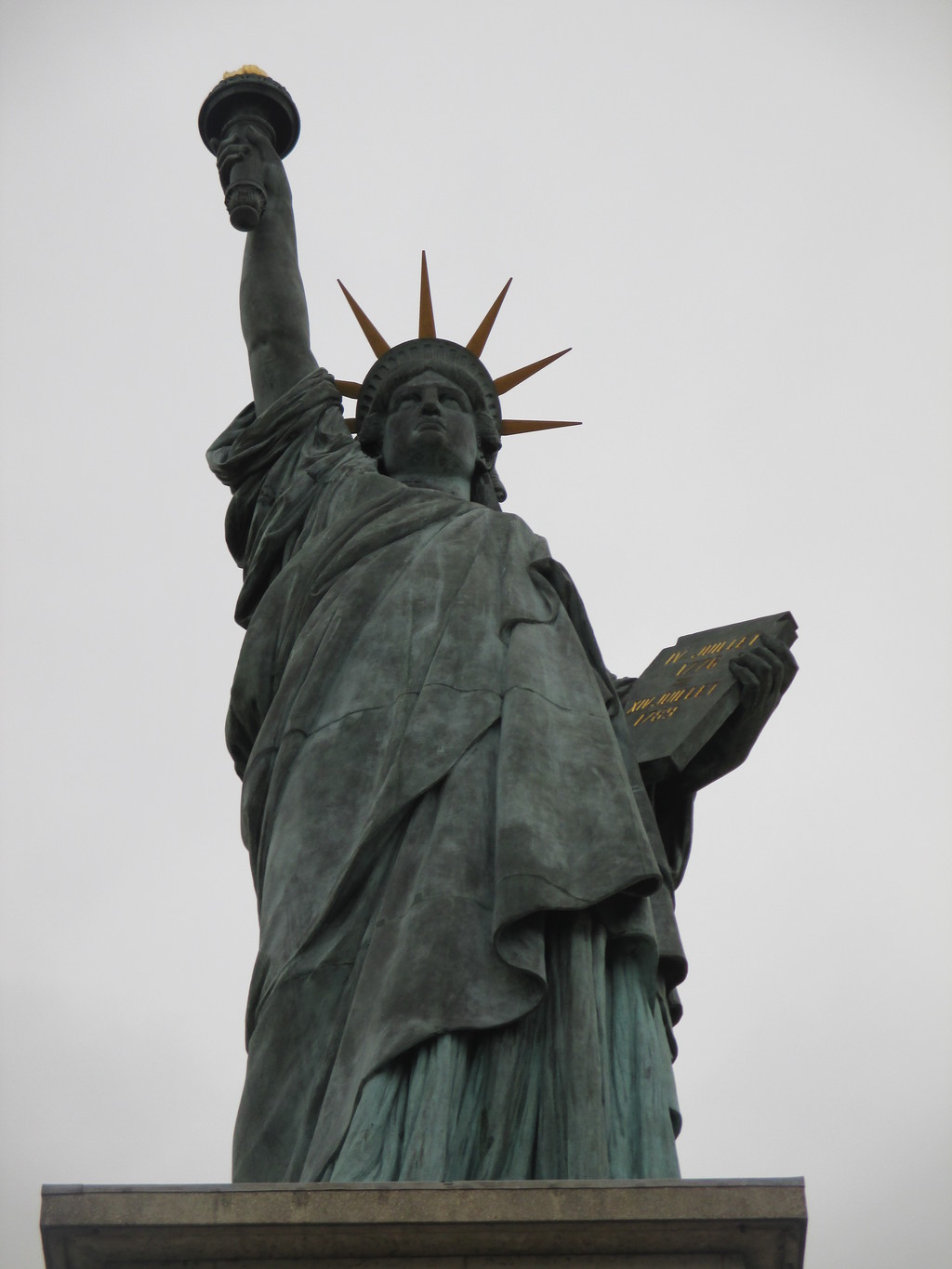The Parisian Statue of Liberty
The Parisian Statue of Liberty

Contrary to the belief that you can only see the Statue of Liberty in the United States, there are actually several replicas of the statue in Paris, as well as in many other countries. In fact, the original statue was both designed and constructed by the French.
Known in French as the Statue de la Liberté, the monument was built to celebrate the friendship between the United States and France. It was a French sculptor by the name of Frederic Auguste Bartholdi who first came up with the idea of creating the monument after talks with a gentleman named Edouard René de Laboulaye.
In June 1871, Frederic Auguste Bartholdi crossed the Atlantic Ocean and set his plan for a national monument in motion, and suggested that it be placed at the entrance to New York port.
By his return to Paris, his idea for the monument had developed: the statue would represent Libertas, the Goddess of Freedom, dressed in a tunic and holding a torch to symbolise peace. He began to produce numerous designs and models.

Bartholdi's plans aroused the interest of renowned architect Eugene Viollet-le-Duc, who elaborated the plans for a brick platform to support the statue. In 1875, the project was formally announced to be a joint project between France and the United States.
Initially, a plaster cast model was produced, which was donated to the Musée des Arts de Paris by Bartholdi's widow, and later a bronze model was made, which was later installed on the Ile des Cygnes (Isle of the Swans) in 1885. Finally, Bartholdi donated another bronze model of the Statue of Liberty to the Museum of Luxembourg in 1900, which was eventually placed in Luxembourg gardens.
The first construction phase of the colossal statue involved the head and the right arm, which holds the torch, and was completed in a workshop near Paris. The head of the statue was displayed at the Universal Exposition in Paris in 1878. The arm and torch were in fact supposed to have been sent to the United States for an exhibition at this time, however their arrival was delayed.
The necessary funds to build the statue had been raised quickly in France, which meant that construction work could now progress quicker. Unfortunately, a new engineer had to be found to design the statue's supporting platform and tower upon the death of Viollet-le-Duc, and Bartholdi employed no other than Gustave Eiffel, known for being the man who designed the famous Eiffel Tower in Paris.
Having been built entirely in France and finished in 1884, the statue was taken apart and sent across the ocean to be erected in its new home of New York city. The Statue of Liberty was officially inaugurated in 1886.

There is more than one Statue of Liberty to be found in Paris, the first being the bronze model produced by the French sculptor Frederic Auguste Bartholdi similar in scale to the statue in America. This statue can be found in the Musee d'Orsay, and an exact copy of it in the Luxembourg gardens, where the original was once erected. However, many other sculptures and miniatures of the Statue of Liberty can be found in the Musée des Arts et Métiers, together with an original plaster cast model.
The main Statue of Liberty however, or Estatua de la Liberté as it is known in French, is located on the Ile des Cygnes (Isle of the Swans) on the River Seine, next to Pont de Grenelle bridge.
This bronze statue in Paris was officially inaugurated in 1889, though its original creator regretted the fact that it is East-facing, meaning turned away from America. This was not the original aim of the statue, and certainly should not be read as an indication of the relationship between France and the United States.
It was not until the Universal Exposition in 1937, when projects such as the Palais de Chaillot were set in motion, that the statue was moved to its current position, facing towards the United States as it was originally intended to do.
In Paris, there is also the Liberty Flame (the Flamme de Liberté in French), which was given to France by the United States. The Liberty Flame is an exact to scale copy of the flame on the statue in New York. It is located next to Pont d'Alma bridge, and has become an unofficial monument to Princess Diana, who was killed in a car crash nearby.
Visiting the Parisian Statue of Liberty
We've already talked about where the other Statues of Liberty are located, so here I'll concentrate on the main one, the Estatua de Liberté on the Ile des Cygnes in the middle of the River Seine.
The statue is situated near to the Pont de Bir-Hakeim bridge on the far opposite side of the island, where the Francia Renaissante statue stands. It sits on a platform with a footbridge leading to it from Pont de Grenelle bridge, which you can access from districts 15 and 16.

In terms of public transport in Paris, the nearest metro station is the Javel - André Citroën stop on Pont Mirabeau bridge, and there is also a train station named Javel there. To get to the far side of the island near Pont de Bir-Hakeim bridge, the metro station named Bir-Hakeim is the closest. On the other side of the river, there is Passy station.
Photo gallery
Content available in other languages
- Español: Estatua de la Libertad de París
- Polski: Statua Wolności w Paryżu
- Français: Statue de la Liberté à Paris
- Italiano: La Statua della Libertà di Parigi
- Português: Estátua da Liberdade de Paris
Rate and comment about this place!
Do you know The Parisian Statue of Liberty? Share your opinion about this place.



















